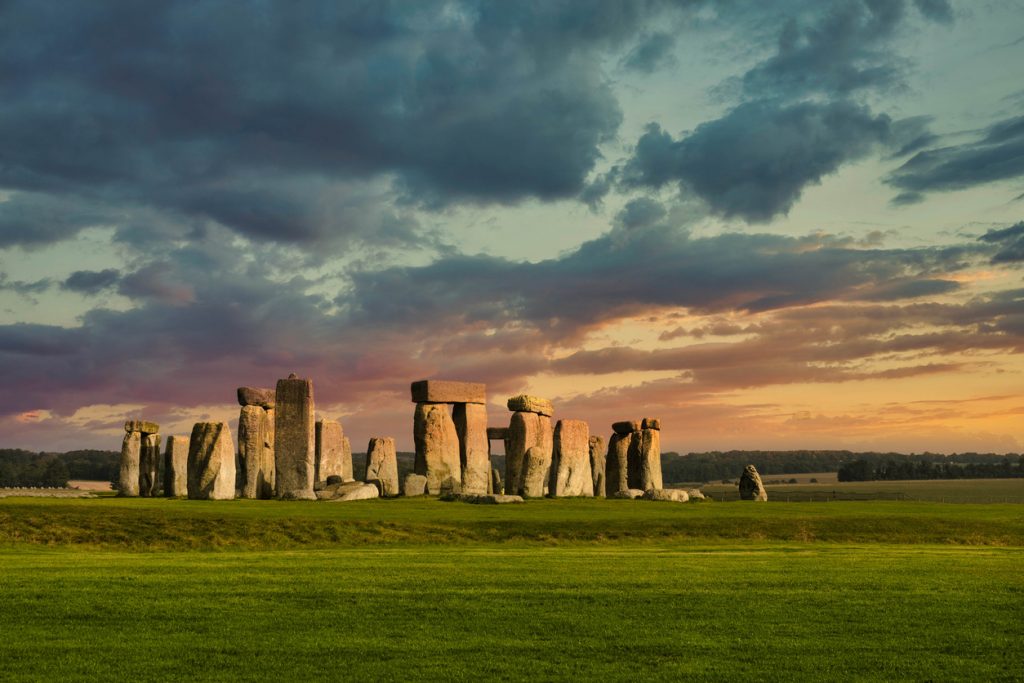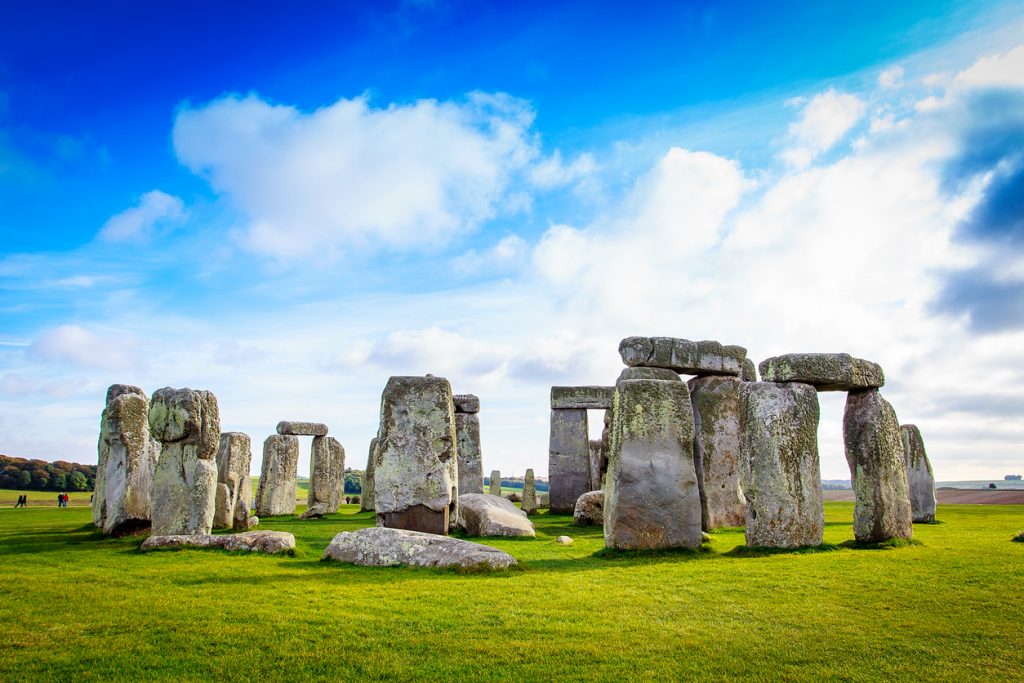Fascinating Stonehenge facts you’ll love
One of the most popular attractions in the country, Stonehenge epitomises ancient history.
If you’ve ever thought of visiting, here’s a quick rundown of some of its most interesting historical facts!
Stonehenge’s builders left no written records

Stonehenge has long perplexed historians and archaeologists due to the absence of written records from its creators.
This means that nobody knows when or why it was built!
Various theories have emerged over the years; some people think it was an astronomical observatory, a religious temple or a burial site.
The mystery surrounding Stonehenge continues to fascinate the imagination of people worldwide and probably adds to why it’s such a top attraction!
The stones were transported over 150 miles!
Stonehenge’s bluestones, weighing up to four tons each, were transported over 150 miles from the Preseli Hills in Wales to the Salisbury Plain. This is a remarkable feat considering the limited technology available during the prehistoric era!
The journey involved dragging the stones over rugged terrain with not only no vehicles, but no wheels!
The placement of stones could be due to archaeoacoustics

The placement of the stones could be influenced by archaeoacoustics – this is the study of how sound interacts with archaeological sites.
This hypothesis proposes that certain configurations of stones may have been intentionally arranged to manipulate sound waves within the monument, possibly for ceremonial or ritualistic purposes.
This has left some people to theorise that it was an ancient music venue!
Stonehenge aligns with solstices
Stonehenge’s main axis aligns precisely with the sunrise during the summer solstice and the sunset during the winter solstice.
This is one of the best links we have to advanced astronomical knowledge of the ancient times!
The careful positioning of Stonehenge concerning the movements of the sun suggests a sophisticated understanding of celestial phenomena and highlights the importance of astronomical observations in ancient societies.
This alignment may have served practical purposes, such as determining planting and harvesting seasons or marking important religious ceremonies tied to the changing of the seasons.
Burial site for the elite
Excavations conducted in the vicinity of Stonehenge have revealed the presence of burial mounds – this provides compelling evidence that the site served as a final resting place for individuals of high status or significance in prehistoric society.
These burial mounds, known as barrows, suggest that Stonehenge held considerable importance beyond its astronomical and ceremonial functions.
The presence of such burial sites underscores the social and cultural significance attributed to the monument, indicating that it was not only a site of religious or ritual activity but also a place of reverence and commemoration for the elite or influential members of ancient communities.
It was constructed in several phases

Stonehenge’s construction unfolded across multiple phases spanning over 1,500 years – it’s thought that it kept being developed over this time!
This timeline is inferred from archaeological evidence, including radiocarbon dating of artefacts and structures found at the site, as well as stratigraphic analysis of layers of sediment and construction materials.
Stonehenge is nowadays worshipped by Druids
Druids worship Stonehenge!
The association between Druids and Stonehenge originates from the 18th century when Druid revival movements gained popularity in Britain.
However, there is limited historical evidence to support a direct connection between the ancient Druids and Stonehenge.
Despite this, modern Druids continue to gather at Stonehenge, particularly during the summer and winter solstices, to celebrate their beliefs and conduct rituals.
Nowadays, Stonehenge sees over 1.5 million visitors per year
Stonehenge is one of the most popular attractions in the UK. It’s a UNESCO World Heritage Site, overseen by English Heritage but on National Trust land, and it draws in an excess of 1.5 million visitors annually.
Did you know these Stonehenge facts?
Arm yourself with these ancient Stonehenge facts before your next trip to Wiltshire!
Don’t forget to check out my best places to visit in Wiltshire post too!






